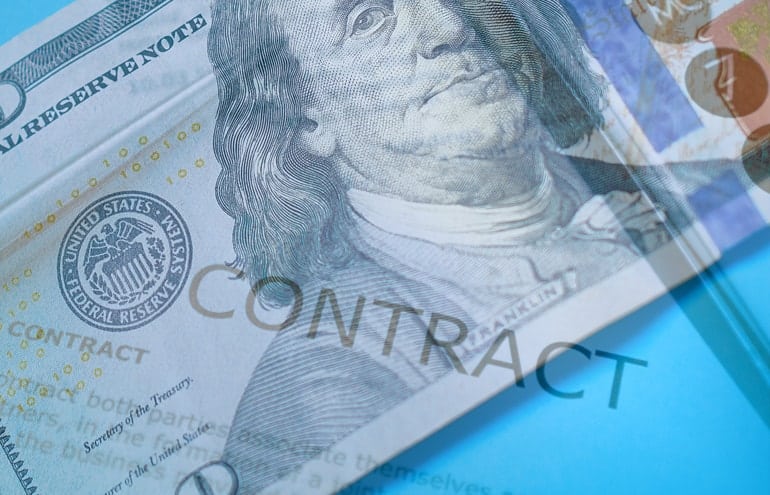Megan Zavieh addresses issues every lawyer should consider when drafting a fee agreement — starting with the client’s identity.

Table of contents
Fee agreements are a bit like prenuptial agreements. Both sides enter into them when both think things will be great between them, and their terms only become of practical significance when things have gone wrong.
Since attorneys are the drafters of fee agreements, we should be looking at how to protect ourselves in the event the client relationship goes south. We need to ensure the agreement covers certain situations. If not, it is likely the agreement will be interpreted against us. We also need to ensure no terms are added that violate the ethics rules, as the existence of such terms will impact any regulator’s analysis of the agreement and, again, ultimately harm us.
State bars and local bar associations frequently publish sample fee agreements, but those are only a starting point. They should not be adopted wholesale without tailoring them to your practice.
Here are four critical areas to assess for any client fee agreement. We’ll address five more issues in Part 2 of this piece.
The First Four Critical Components of Your Fee Agreement
1. Identity of the Client
The answer may be painfully obvious (Jane Smith) or far more complicated (a member of the board of directors of a company, but not the company itself, who also happens to be a shareholder — the possibilities are endless).
Before even identifying the scope of work to be completed, the identity of the client must be clearly delineated in the written fee agreement. It must also be made abundantly clear to the humans involved in the representation. Sometimes the humans are surprised to learn they are not the client, such as when the client is a trust or a corporate entity. Other times, one person thinks they are a client when in reality it is another person, such as in a married couple when the representation involves the rights of only one of them.
What is written will most likely control in a dispute. But even then, it is subject to argument if you as the lawyer did not clearly explain to the individuals involved who or what is the client.
The ramifications of misidentifying a client can be many. Privilege can be waived, conflicts created and malpractice committed if we are too casual in dealing with individuals who are not the client.
2. Scope of Work
The fee agreement should very clearly set forth the scope of work the client is hiring you to perform.
On hourly engagements, there are two primary risks of failing to complete this step:
- The client will expect you to continue working on everything they bring your way. That may mean you end up being responsible for deadlines, pursuit of claims, and protection of rights that you never thought you were overseeing. Some might be beyond your area of expertise. That also means that if a ball is dropped, you will be held to blame by the client and, possibly, by the state bar and a court adjudicating a malpractice claim against you.
- The other risk is the flip side. You think you’re responsible for more than the client believes you to be, so you do work and then send a bill that the client was not expecting. Those bills often do not get paid.
On a flat-fee arrangement, the biggest risk of an unclear scope of work is that you get stuck doing a lot more work than you intended when you set that fee. If the end of the representation is not clear, you may end up liable for breaching your duty with no backstop to rely on.
Failure to specify the scope of work underlies a lot of hourly-billing lawyers’ concerns about switching to flat fees. This is the linchpin of a successful flat-fee practice — clearly define what you are being hired to do, and you should not find yourself stuck with unexpected ethical obligations or excess work for too little pay.
3. Fee Amount
Exactly how much the client is expected to pay is another sticking point in fee agreements. Lay it all out very clearly; a fee agreement is not a place to confuse a client or hide the 8 ball. If it is flat fee, state the final amount. In hourly billing, explain what the rate will be (and if you have multiple people, set out each person’s rate), explain what tasks will be billed, the hourly increments, and the use of any advanced fee deposit.
If there are costs on top of the legal fees, explain those as best you can. In some practice areas those are very definite — for example, a specific amount for each type of filing fee in an immigration law practice. Others are less clear and will fluctuate depending on many factors — for example, deposition fees and travel expenses. Help your client understand exactly what will be expected of them financially to avoid upset later on.
4. Payment Terms
Attorney-client relationships break down over non-payment all the time. Having the payment terms laid out clearly is important to avoid this problem and to protect you if the problem does arise. Highlight interest, late fees, and consequences of non-payment (such as cessation of work, termination of the engagement, or a withdrawal process in litigation). Make sure you are in compliance with your state’s rules when it comes to withdrawals, because we typically cannot just cease work in an ongoing matter without taking steps to protect the client.
If you offer ways to pay such as payment plans and recurring credit card charges, explain those in the fee agreement. Make it easy for clients to keep up with their financial obligations to you.
In Part 2, we’ll explore five additional items that every lawyer should consider including in their fee agreement.
Illustration ©iStockPhoto.com
Subscribe to Attorney at Work
Get really good ideas every day: Subscribe to the Daily Dispatch and Weekly Wrap (it’s free). Follow us on Twitter @attnyatwork.
















